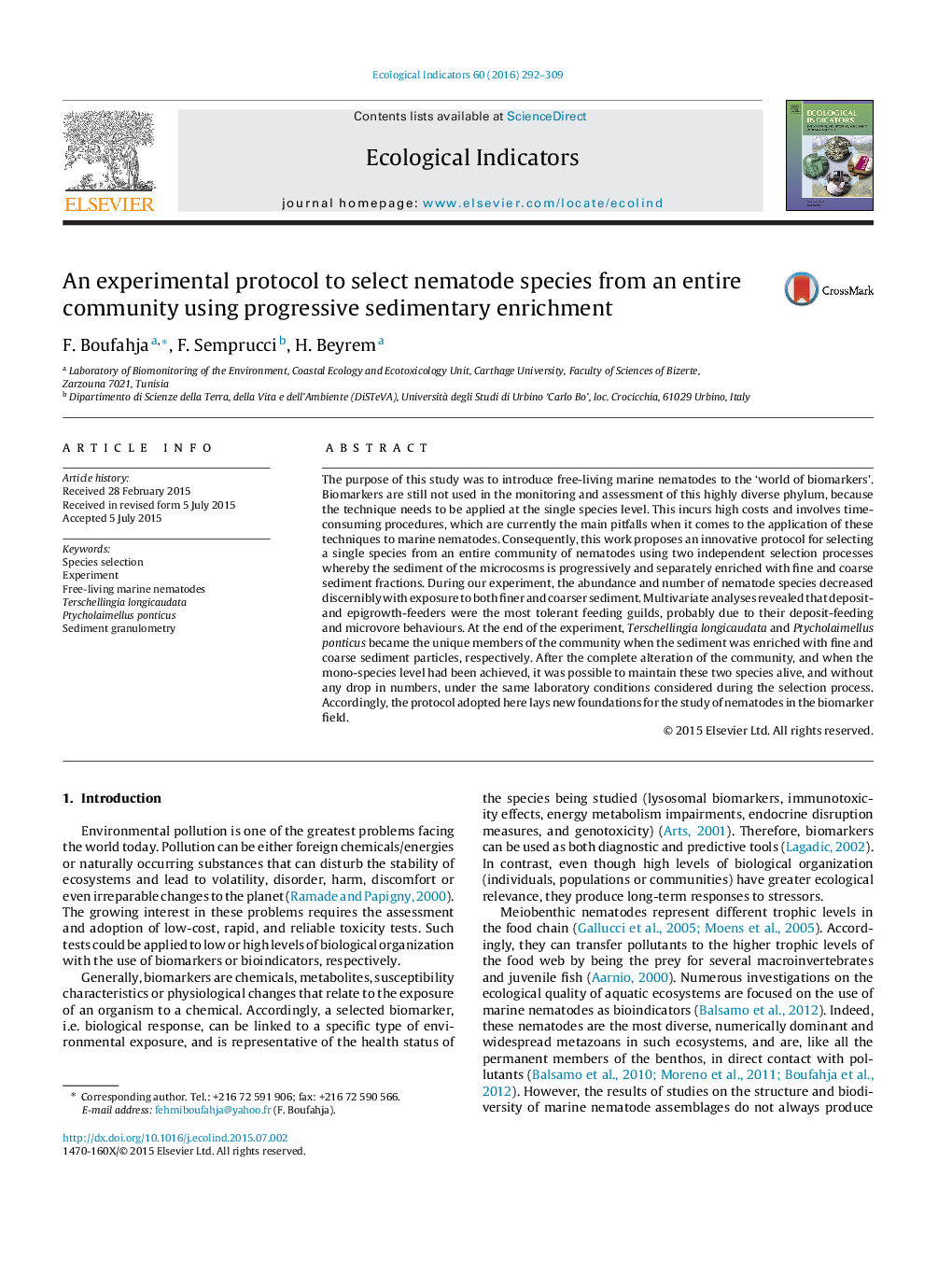| Article ID | Journal | Published Year | Pages | File Type |
|---|---|---|---|---|
| 6294039 | Ecological Indicators | 2016 | 18 Pages |
Abstract
The purpose of this study was to introduce free-living marine nematodes to the 'world of biomarkers'. Biomarkers are still not used in the monitoring and assessment of this highly diverse phylum, because the technique needs to be applied at the single species level. This incurs high costs and involves time-consuming procedures, which are currently the main pitfalls when it comes to the application of these techniques to marine nematodes. Consequently, this work proposes an innovative protocol for selecting a single species from an entire community of nematodes using two independent selection processes whereby the sediment of the microcosms is progressively and separately enriched with fine and coarse sediment fractions. During our experiment, the abundance and number of nematode species decreased discernibly with exposure to both finer and coarser sediment. Multivariate analyses revealed that deposit- and epigrowth-feeders were the most tolerant feeding guilds, probably due to their deposit-feeding and microvore behaviours. At the end of the experiment, Terschellingia longicaudata and Ptycholaimellus ponticus became the unique members of the community when the sediment was enriched with fine and coarse sediment particles, respectively. After the complete alteration of the community, and when the mono-species level had been achieved, it was possible to maintain these two species alive, and without any drop in numbers, under the same laboratory conditions considered during the selection process. Accordingly, the protocol adopted here lays new foundations for the study of nematodes in the biomarker field.
Related Topics
Life Sciences
Agricultural and Biological Sciences
Ecology, Evolution, Behavior and Systematics
Authors
F. Boufahja, F. Semprucci, H. Beyrem,
